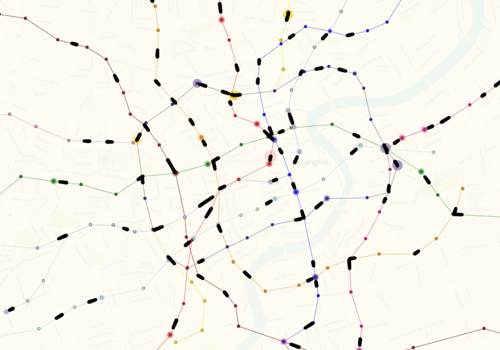The theme for VISAP’15, the IEEE VIS 2015 Arts Program, is Data Improvisations. Artists and visualization researchers share common goals: to make things visible which are normally difficult to see, and to enable reasoning about information that we might otherwise remain ignorant of. A conventional explanation of the differences between art practice and visualization research is that artistic exploration raises new questions while visualization research aims to help domain experts answer existing questions. However, these categorizations may be oversimplified. Media artists create opportunities for reflecting on cultural issues, but also highlight how we absorb technology and explore how the exposure to tremendous amounts of data affects our daily lives. Visualization researchers raise new questions by pushing the boundaries of what we can perceive when introducing new interactions with and representations of complex data.
Recently, in the visualization community, significant emphasis has been placed on understanding temporality, on how to represent and reason about information that changes over time. Advances in parallel algorithms and high-performance computing hardware have made it possible to process and analyze increasing sizes of data in real-time. New visualization techniques strive to develop a means for human viewers to more effectively observe and reason about these streams of information. Computational artworks also have explored dynamics as a primary theme: how social media feeds erupt with new content, how robotic architecture can acknowledge movement or emotion, or how compositional algorithms can creatively respond to live inputs of musical sound. Moreover, there is a rich vocabulary about how meaning evolves over time that is present in other contemporary mediums: kinetic sculptures that react to natural forces or human interaction, cinematographers who capture the changing qualities of light, and jazz musicians who trade musical fragments to build new compositional ideas.
Can these types of artistic explorations offer insight into thinking about the effective representation of time in visualization research contexts? Complementarily, can the advances in visualization research present new opportunities for artists to think about the creative coupling of data to meaning? Could scientific research and the arts improvise to create new spaces of interaction and analysis? In this year's call for entries, we are looking especially for projects and papers that explore the relationships between visualization research and artistic practice, and that present or discuss creative visual techniques that emphasize the temporal and dynamic aspects of scientific or cultural exploration.
In collaboration with the School of the Art Institute of Chicago, selected artworks will be featured for a two week period in October in the LeRoy Neiman Center. The exhibition is open to the general public as well as to VIS attendees. Other artworks will be chosen to present for a shorter time during the IEEE VIS conference. All accepted artworks (whether full installations or not) will be featured in the VISAP'15 Exhibition Catalog, to be designed by Jack Henrie Fisher.
The VISAP'15 papers sessions will take place at the Palmer House in downtown Chicago during IEEE VIS. Following the success of last year's collaboration with Leonardo/ISAST, a selection of the accepted submissions will be featured in a special section of an issue of Leonardo, the Journal of the International Society of the Arts, Sciences and Technology. Additionally, selected authors will be invited to prepare a revised, longer version of their papers for fast-track submission to IEEE Computer Graphics & Applications.
All submissions are due on June 26th, 2015. Details about the submission process as well as author guidelines can be found at the VISAP'15 website. For instructions on how to submit an artwork, click here: Arts Track. For instructions on submitting a paper, click here: Papers Track.
We look forward to your participation!
Angus Forbes, Fanny Chevalier, and Daria Tsoupikova
VISAP'15 Chairs


